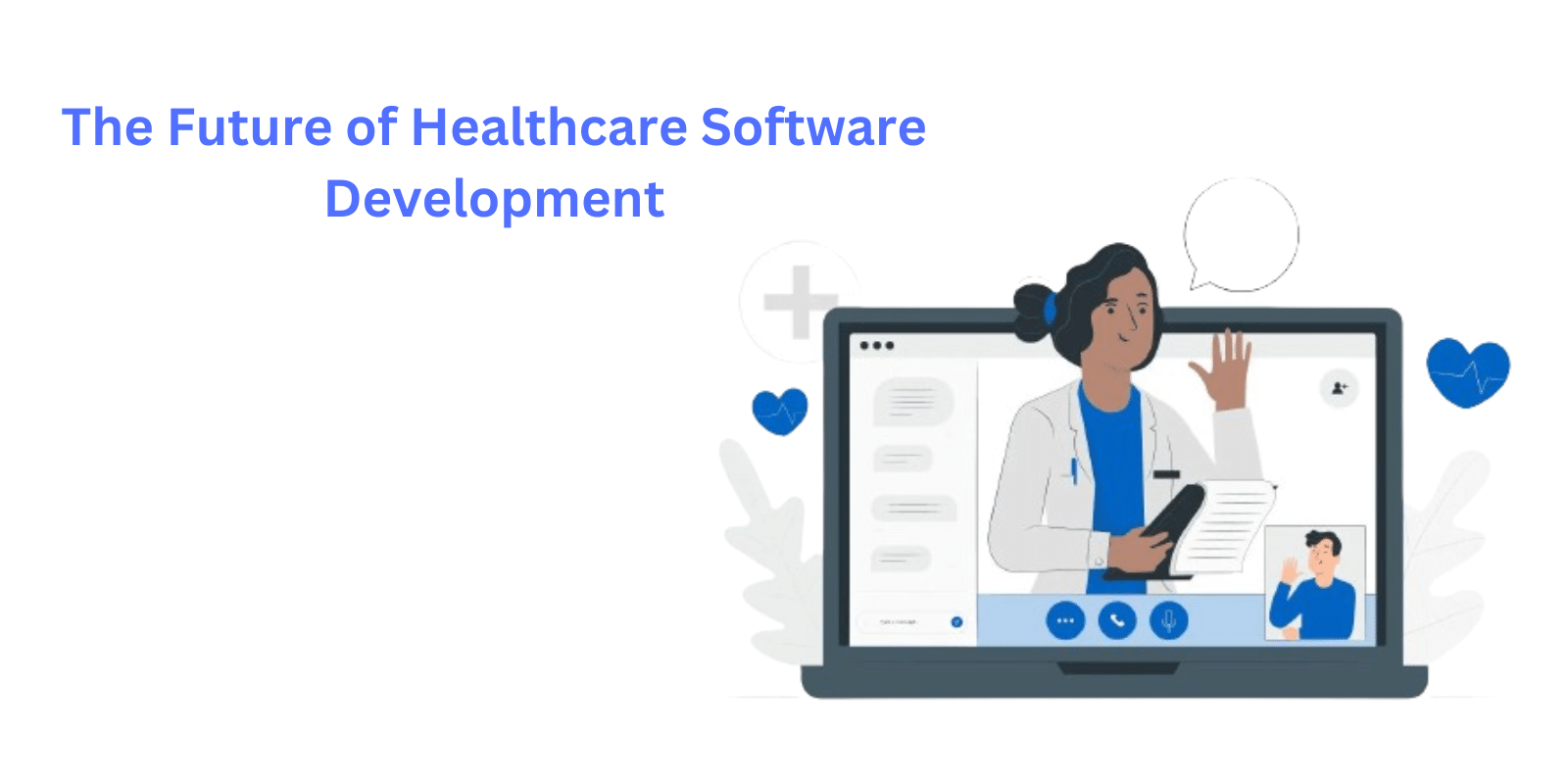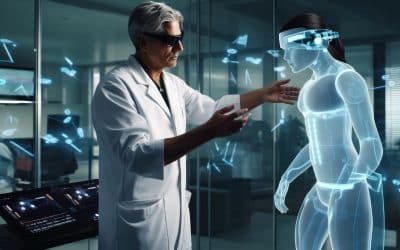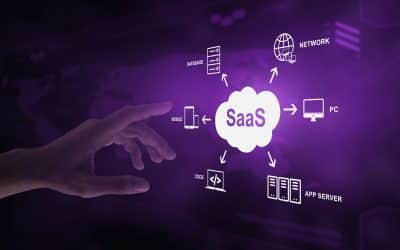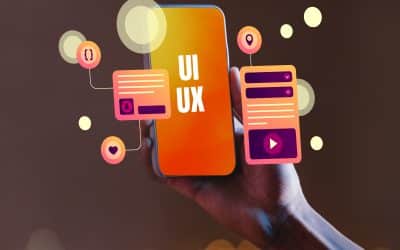The healthcare software industry has produced nearly $600 billion in annual revenue, which is a testament to its value in medicine. In addition to the obvious benefits of more efficient patient care and administrative tasks for data processing, Numerous factors drive this impressive increase. Technological developments like artificial intelligence (AI) and the Internet of Things (IoT) have forced medical businesses to be more creative when finding innovative healthcare platform solutions. The Healthcare SaaS field is evolving rapidly, and technology’s impact on healthcare and patient operations is becoming more critical.
The health sector has seen significant shifts. The outbreak of COVID-19 has brought to light the need for a revolution in the healthcare system across the globe. Due to the growth of healthcare software, health professionals have been increasingly conscious of the significance of technology within their industry. The advancement of software within this field allows them to streamline various tasks like scheduling appointments, medical billing inventory management, and EHR maintenance. Automation has proved to be an absolute lifesaver for companies and healthcare providers, mainly when medical professionals are under-burdened.
The concept of automation in healthcare is not new, but the spread of pandemics has increased its use. As the world moves towards a more technological age, the health industry has been able to adapt to technology to keep current. Automating the health sector could significantly decrease the burden for healthcare professionals by providing top healthcare software development solutions that streamline processes and save time.
What Is Healthcare Software Development?
Simply put, the healthcare software assists in coordinating and managing the daily interactions and administrative duties between medical professionals, patients, and health managers. They specialize in streamlining communications and improving the standard of care. While ensuring the confidentiality and reliability of records in clinics, hospitals, laboratories, research labs, service offices, and medical equipment manufacturers.
Machine learning has accelerated the creation of healthcare software. Some of its numerous benefits include helping to digitize patient records and assisting in diagnosis. Furthermore, big data and e-health are playing a pivotal role in revolutionizing Healthcare Software Development.
Technology is crucial in ensuring the workflow of a clinical clinic and making everyday tasks more efficient. It assists in managing the medical record, scheduling appointments, and handling the financial and accounting processes.
Key Features Of Healthcare Software Development
Healthcare apps incorporate several vital elements to satisfy the evolving and challenging requirements. They help improve patient treatment, enhance processes, accuracy, data security, and more.
These are the fundamental aspects of the software used in healthcare:
Electronic Health Records and Health Information Exchange
EHRs form the basis of healthcare software. EHRs are the foundation of healthcare software. EHR software digitizes, centralizes, and saves patient information like medical histories and diagnoses, medication, and treatment plans. EHRs facilitate collaboration between healthcare professionals by offering a comprehensive overview of the patient’s condition. Health Information Exchange allows for the exchange of secure patient information between healthcare providers, promoting interoperability.
Clinical Decision Support Systems (CDSS)
CDSS incorporates clinical and patient data, giving healthcare professionals useful information during healthcare. The system assists in diagnosing disease, suggesting the appropriate treatment, and alerting physicians to potential concerns such as drug interactions or allergy issues. CDSS increases the effectiveness of the decisions made, minimizes mistakes, and supports evidence-based practice.
Telemedicine and Virtual Care Platforms
Telemedicine permits remote consultations and monitoring. These platforms facilitate the communication of healthcare professionals with patients, improving the accessibility to treatments and reducing the frequency of in-person appointments. Telemedicine applications comprise integrated video conferencing software with secure messaging and remote monitoring.
Appointment Scheduling and Patient Portals
This feature helps streamline scheduling for both patients and healthcare professionals. Patients can make appointments using portals, look up their medical records, and securely connect with health specialists. This feature improves patients’ satisfaction, engagement, and convenience.
Mobile Health (mHealth) Applications
The development of mobile apps for healthcare puts patients’ health at their fingertips. mHealth apps support various features, such as the remote monitor, medication compliance reminders, and wellness tracking. Patients are empowered to be active in their health, which encourages a preventative strategy.
Interoperability Standards
Information exchange between healthcare providers must be effortless. Healthcare software conforms to the guidelines set by the sector, such as Health Level Seven International and Fast Healthcare Interoperability Resources. The standards permit different applications to interact with each other and facilitate data sharing and coordination.
Data Security and Privacy Measures
Security functions that are strong and dependable, due to the delicate nature of healthcare data, are vital. Healthcare software employs encryption, authentication, and access control protocols to safeguard the privacy of patients’ data. Healthcare software must comply with data security regulations such as HIPAA or GDPR in Europe and the United States.
Diagnostic Imaging and Picture Archiving and Communication Systems (PACS)
Healthcare software usually includes components that handle diagnostic imaging, including X-rays and MRIs. PACS assists in data storage, retrieval, and exchange of pictures. This facilitates communication between doctors, radiologists, and other health professionals.
Laboratory Information Management Systems (LIMS)
LIMS controls lab workflows, including tracking samples, placing orders for tests, and presenting outcomes. It improves the effectiveness and accuracy of laboratory procedures and offers timely diagnosis information.
Population Health Management
Healthcare software typically contains features enabling organizations to monitor and assess the health status of individual patients. This involves identifying populations at risk, implementing measures to prevent them, and optimizing resource allocation to enhance community health.
Billing and Revenue Cycle Management
Healthcare software must offer administrative efficiencies. Revenue cycle and billing tools automate financial management processes, including insurance billing, processing claims, and tracking payments. This feature reduces the chance of billing mistakes, speeds up reimbursement, and enhances healthcare organizations’ financial stability.
Health Analytics and Reporting
Software for healthcare provides reports and analysis tools to help professionals gain valuable insights from massive databases. The features are designed to support quality improvement in regulatory reporting and evidence-based decision-making.
Remote Patient Monitoring
Remote monitoring permits data collection about patients’ health outside traditional healthcare settings. Sensors and wearable devices that track vital sign indicators enable medical professionals to observe chronically ill patients remotely.
Designing User Interfaces (UI) and User Experiences (UX)
Software intended for healthcare should have user-friendly and intuitive interfaces to software. The well-designed interface and user experience improve use and help reduce learning time. Additionally, it improves high levels of satisfaction among medical professionals and patients.
Training and Support Modules
Some Custom Healthcare Software Development companies offer training programs and options for continuous support to ensure smooth adoption. This helps healthcare professionals and employees master the software and resolve any issues that may be encountered.
How Custom Software Development Is Shaping The Healthcare Sector
According to the 27th annual PwC Global CEO Survey, 54 percent of CEOs working in healthcare plan to invest at least in one acquisition within the coming three years. This is leading to a shift within the healthcare software industry. Furthermore, one of the KPMG reports indicates that technology plays a significant role in these deals, and many businesses are focusing on acquiring digital capabilities, such as cloud-based services and digital health.
Technology has had a long-lasting impact on healthcare, so we’ve identified some areas impacted by introducing custom software development tools.
Advanced Diagnosis
Technology is revolutionizing the field of healthcare by providing enhanced diagnostics to patients while efficiently managing operations. Today’s software market is modern, and some options assist in detecting severe illnesses in the early stages. Furthermore, AI-powered solutions are aiding in the treatment process and are more efficient than conventional methods. For example, IBM Watson is a popular name in high-end data analysis that provides valuable insight.
Increased Growth Chances
In the digital age of the telehealth industry, healthcare, as well as a paperless world and traditional medical record-keeping technology, has already been replaced by the latest technologies and software for enterprise advancement.
Electronic medical records (EMRs) can store many patients’ information in cloud storage and offer better security. Every healthcare facility can eventually benefit from more ROI thanks to reduced operating expenses. So, medical software explicitly designed for you can change the game, allowing the rapid growth of businesses.
An Integrated System
Customized healthcare software integrates all the different processes that you often use. Using customized software development, numerous complex processes, such as finances, OPD, and human resources, are synchronized into one location. Healthcare providers will experience less administrative burden, giving them more time to focus on patient care.
Health Apps For Mobile Devices
Mobile apps simplify life when it comes to booking a hotel, ordering groceries and food, and then relaxing in the safety of your own blanket. In the process, the medical industry uses technology in healthcare IT to help build practical applications that work on all devices. It is possible to find various mobile device apps that track your heart rate, BMI, sleep, stress level, and more!
When considering mobile apps, it is essential to consider the convenience of video analysis, which could overpower geographical barriers and create doors for quick access to the health system. Healthcare facilities have certainly benefited from technological developments. Healthcare organizations are not required to buy equipment and particular documentation as they were in the past.
Healthcare Standards Improvisation
With the help of cutting-edge technology, automated systems, and other advanced technologies, customized software can transform the healthcare industry as it is today. Each small step, such as patient appointment scheduling and patient data storage, has been redesigned. Healthcare software that is customized streamlines old processes to keep up with the latest healthcare regulations.
Accessible For Multiple Platforms
A customized healthcare software development business produces healthcare-related software on various platforms, such as tablets, desktops, smartphones, and smartwatches. When every person on the health organization panel utilizes one specific software that synchronizes data, the managing process will be more readily available. Patients and doctors are the primary users of mobile applications. Additionally, they can access live data on multiple devices without issue.
Leading Tech Trends Shaping The Future Of Healthcare
The medical software field development is marked by the emergence of new patterns that have transformed healthcare delivery. Artificial Intelligence (AI) and Machine Learning lead these trends, providing more innovative solutions to healthcare by utilizing advanced diagnostic tools and personalized treatment programs. The latest technologies allow healthcare professionals to offer more efficient and customized care, improving health service quality.
Telehealth services have also grown significantly, mainly due to the COVID-19 epidemic. They break down geographical barriers by providing healthcare services for underserved and remote populations. Telemedicine is a growing trend that represents an enormous shift in healthcare services. It allows patients to get medical advice and treatment in the comfort of their own homes.
A personalized approach to medicine, powered by advanced software algorithms, is gaining momentum in the software for medical use industry. This transforms healthcare delivery by tailoring treatment plans to individual patient’s needs, leading to improved healthcare services. These new trends set the scene for an efficient, productive, and patient-focused health system.
Technological advancements are accelerating, and with the increasing demand for accessible health care, the technology industry is swiftly evolving. The latest trends in technology that could influence the future of the health sector are,
Telemedicine and Remote Healthcare Services
These services allow patients to receive healthcare via remote consultations instead of physical appointments, increasing in-person appointments and offering a more comprehensive range of healthcare services.
As more people adopt Telehealth services, patients are now able to receive medical treatment in the privacy of their homes. This isn’t just for convenience, but it’s crucial to managing chronic illness, reducing readmission rates to hospitals, and improving patient outcomes. Modern technologies such as wearable health devices and mobile health apps allow continuous monitoring of crucial health metrics, enabling preventative care and prompt intervention.
Monitoring systems for remote patients are changing. They are integrating AI machine learning and AI to more precisely and accurately analyze patient data. This improves patient care quality and eases the burden on healthcare professionals, allowing them to concentrate on more critical situations.
Personal Medical Equipment
Wearable monitors, blood glucose meters, heart rate monitors, and healthcare apps provide patients with convenient solutions to track and monitor their well-being. Custom medical software is utilized to develop different personal devices to aid in monitoring and assessing the patient’s physical state. Most of these instruments are now wearable monitors that measure heart rate, oxygen saturation levels, temperatures, and blood pressure.
Many more tools are on the way. At present, a number of companies are developing devices that can measure vital parameters and other crucial ones that are important to patients suffering from chronic illnesses. As time goes on, these sensors will also allow physicians to send inquiries for assistance. Data obtained from these devices can also help provide more effective diagnosing.
Healthcare Software Development based on AI By utilizing artificial intelligence, health professionals can more accurately identify the cause of illness, reduce medical mistakes, and improve their workflow to boost effectiveness.
Augmented and Virtual Reality Technologies
Innovative technological developments in augmented and virtual reality have allowed doctors to be trained, enhance patient education, and treat various ailments. Virtual and augmented reality devices are currently extensively used for educational and entertainment applications across various sectors.
For medical professionals, the variety of tools includes simulators that aid healthcare professionals’ training, planning intricate surgeries, diagnosing for anxiety, and pain treatment rehabilitation. Augmented Reality screens assist surgeons to make more informed decisions in times of need. AR helps to streamline robotic surgeries.
Nanotech and Robotics
These helped create innovative medical devices, treatments, diagnostics, and instruments. This has allowed healthcare institutions to address the most difficult healthcare issues efficiently.
Vendor and Technology Partnerships
Collaboration between suppliers or technology partners to design particular integrations and solutions could affect costs. Developing and maintaining effective collaborations, licensing technologies, and integrating third-party solutions can influence the total cost of developing healthcare software.
Accessibility and Usability Compliance
Further expenditures are needed in development, testing, and modifications to ensure that software designed for healthcare is usable and accessible to requirements. Conformity with accessibility standards such as WCAG (Web Content Accessibility Guidelines) ensures the software can reach all users and avoid legal issues.
Data Storage and Processing Infrastructure
An efficient infrastructure is required to store and process the ever-growing amount of information within healthcare, especially when utilizing advanced technology. Cloud storage services, cloud services, and infrastructure costs are significant contributors to the development costs for healthcare software.
Genomics Tools
Incorporating genomics tools into health software development is quickly advancing. These applications allow for greater speed, efficiency, and cost-effective analysis of genetic data. The tools allow for individual treatment plans based on a person’s genetic profile, opening the door to new horizons of personalized medicine and individualized therapies.
Wearable Technology
The practice of wearing a device such as a smartwatch or health tracker in the hands of people with chronic illnesses is growing. It offers a practical means for them to track their health and ensure their overall health.
Blockchain Technology in HealthTech
Blockchain technology could change the way healthcare is conducted, expanding its scope with the potential for enhanced efficiency and security. Blockchain applications for healthcare extend to enhancing transparency in supply chains and safeguarding financial operations online.
One significant benefit of blockchain technology in healthcare is its potential to reduce healthcare costs by billions over the next few years. The cost reduction is anticipated throughout various sectors, such as operational and software development personnel, and particularly in reducing security breaches of health information. Blockchain’s immutable nature and decentralization allow it to handle sensitive medical information while ensuring security and integrity.
Edge Computing for Real-Time Processing
Edge computing adoption in real-time healthcare applications will cost developing and designing infrastructures that can work with edge technology. Additionally, additional investments and considerations will be required to ensure that software can effectively process and analyze data nearer to where it came from.
Virtual Assistants and Chatbots for Healthcare
NLP capabilities’ growth and maintenance cost are elements in integrating chatbots or virtual assistants to improve patient engagement. AI technology can be used to design sophisticated interfaces that can facilitate conversation and ensure precise answers.
The Future of Healthcare Software Development
The Medical Software Development Company evolves as new technologies and emerging trends occur every day. Here are a few of the latest trends expected to impact the development of healthcare software:
- Artificial Intelligence (AI) and Machine Learning (ML) will significantly impact healthcare software development. They will enable greater personalization of care and better patient results.
- Blockchain technology can enhance data security and improve interoperability among healthcare providers.
- The Internet of Medical Things (IoMT) is expected to continue growing. Many more health devices and wearables are being connected to health systems, providing the latest patient information in real-time.
- Virtual and Augmented Reality will assist in improving educational and medical training and patient care.
- Cybersecurity is a constant priority as healthcare is the most frequent target of cyberattacks.
The development of healthcare software is an integral part of the transformation to digital in the health industry. Software development for custom healthcare solutions can catalyze innovation and improve healthcare for patients while simplifying administrative processes and improving the efficiency of operations. The future of healthcare development software is promising, with technological developments and new trends that will transform the field and enhance the patient experience.
Conclusion
Advances in software development for healthcare could fundamentally change how healthcare is viewed. These advances aren’t just technological achievements; they are an entirely new paradigm regarding patient health care, accessibility to health, and industry efficiency. From AI-driven diagnostics to Blockchain-enhanced security, every trend will lead to an integrated, flexible, and patient-centric health system.
For healthcare professionals, these technology trends signal a new era with enhanced capabilities and more precise treatment. Patients can expect higher-quality care, better outcomes, and more autonomy to manage their health. When we think about our future, ongoing technological advancement in healthcare has enormous innovation potential, altering how healthcare is offered and received.











